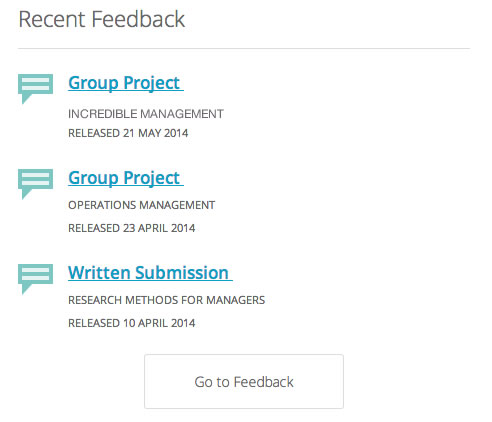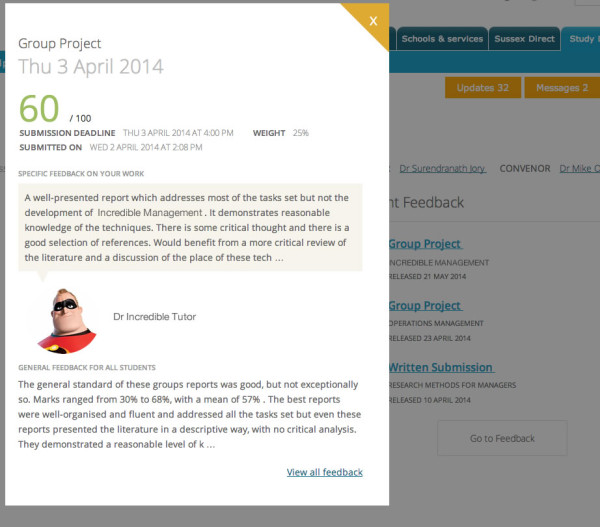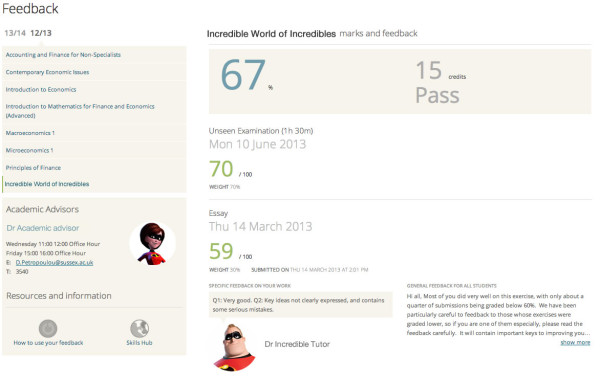How I became a Doctor of Education

I turned the corner. In front of me was a fifty metre corridor at the end of which were two examiners who would determine my future in academia. They had left the door ajar, probably by accident rather than design, but it meant that I would need to walk the length of the corridor in full view of the two of them. I felt a sense of dread combined with a sense of amusement at the situation. This was the day of my doctoral viva.
Since starting work as an Educational Technologist at Sussex, I have focused on enabling tutors to provide resources and run activities for their students over the internet. My aim has been to improve students’ educational experience harnessing the power of the web.
In 2003 I worked within the School of Life Sciences where I implemented an online system which allowed tutors to upload supporting documentation for their modules. In 2004 I replaced this with an open source system, called Moodle, which had a strong community and a number of teaching, learning and assessment tools. This system got adopted by the whole University in 2006.
I always realised the system would change the workload of the tutors, their delivery of module resources and the tasks they would set for their students. However it wasn’t until 2006 I decided to initiate some research into the subject. I started a part time Professional Doctorate in Education researching the use of technology in university teaching.
A Doctorate demands that the candidate makes a claim to knowledge which is accepted by his or her examiners. That means my research needed to have some thing new say – of consequence – a daunting prospect.

The structure of this Professional Doctorate was untraditional and required me to produce four mini assignments before embarking on a larger research project which would constitute the evidence for my doctoral thesis. These four initial assignments enabled me to get familiar with the subject area, the research practices I could adopt and the kind of claims to knowledge I could hope to contribute to the domain.
The research
Originally I wanted to make far-reaching claims based on large data samples obtained from questionnaires and data-driven sources. I wanted to quantify and weight view points and experiences of teaching, learning and technology. I imagined the outcome of my research would allow me to make objective, irrefutable claims based on concrete evidence derived from these data sources.
However, my experiences in these research exercises led me to realise that such a project may not be as rewarding as I had originally thought. During the process I came to realise I knew less and less about the subject, and that while quantitative research would help me prove things I already knew (or thought), it was unlikely to tell me something new. In contrast, I came to realise that qualitative research would allow me to understand the issues at a more profound and personal level.
With this scope in mind I decided to run case study research in teaching, learning and technology in different disciplines. I decided my research would focus in detail on a small number of university modules that were already using the software platform my colleagues and I had implemented in innovative ways. I put together a number of research questions that the thesis hoped to address.
I contacted a number of tutors and asked if they were willing to be part of my study. I ended up with three willing tutors each in a different discipline which spanned soft, hard and applied sciences. Each had used the software system to engage the students in activities that would be formally assessed and contribute to their end-of-year marks.
I spent the first few months of my research project reading relevant journals and books. I took extracts of the readings, and coded and grouped them into theoretical arguments. I drafted a literature review for the thesis which was subject to change according to my findings.
In preparation for my research I reviewed the analytical frameworks which I could use to interpret the results. At the end of this process I had identified a well-established framework which would help me understand the issues that were emerging from a “system’s view” rather than that solely of the individuals I was speaking to.
I then conducted the research, which included interviews with the tutors, interviews and focus groups with the students, documentary analysis and online observation. I triangulated my results examining how they related, where they supported and contradicted each other and where the parallels made the evidence more robust. I coded my findings using my chosen analytical framework and matched these with my readings.
Making my argument
At this point I found that my research findings did not adequately answer my original research questions, but had revealed answers to even more interesting questions, such as why some educational modules inspire learning autonomy and others promote a culture of rote learning. I therefore revised my questions and went back to my literature review removing, and adding pieces, and ensuring that it related to my arguments. Once I had developed an argument which was evidenced by my research and by the research of peers within the field I wrote up the results of the research processes highlighting areas that supported my argument.
I then started writing up other parts of my thesis. In the introduction I presented myself, my history and why the field interested me. In the discussion I detailed the analysis of the findings and the interpretations that could be drawn using the framework I had chosen. In the conclusion I responded directly to my research questions and put forward a claim to knowledge that contributed to the domain.
Just as I was about to submit my thesis for examination personal circumstances arose which meant that I had to intermit for a period. Consequently my thesis lay idle for nearly two years. Returning to it was difficult, but actually this gap gave me a chance to make an even stronger and clearer argument. Furthermore I got more time from my department to complete it, which was useful as well.
Finally, eight years after I had started the Doctorate and six years after I had started my thesis I was ready to hand it in. On the very last day possible I gave it to the Research Student Administration Office.

Defending my argument
The final step before receiving my Doctorate award was to have the thesis assessed by experts in the field and make an oral defence of it to them. This is called a viva. The viva is conducted with an “internal” academic who works at the University where you have completed your study and an “external” academic in the field.
So here I was at the end of the corridor about to meet my fate. I walked towards the examination room with trepidation – my supervisor, Doctor John Pryor, at my side. I finally reached the door and presented myself myself to Doctor Andrew Chandler-Grevatt and Professor Kay Sambell, two academics I respected highly in the field. They had both read my thesis and proceeded to interrogate me about it, asking me probing questions such as why I had approached in such a manner and how I had come to this conclusion.
Happily they felt I had something new to say. We had an in depth conversation about it and they saw its contribution to knowledge in the field. Kay even suggested I make a paper out of the piece of work. I hope to contact Kay again soon and ask if she and my supervisor would be happy to be co-authors. They gave me a few minor corrections for which I am very grateful.
Contribution to domain knowledge
Research produces domain knowledge. It provides evidence for theories which are used to explain observations in knowledge domains and academic disciplines.
Doctoral research such as mine is usually the first attempt someone has at contributing disciplinary knowledge to a domain. A doctoral degree demands that the student says something new within a conceptual field – that they make a “claim to knowledge”. In order to do this they use established research methods to produce data, and analyse that data using recognised theoretical frameworks which give meaning to the data. This analysis provides credible evidence for the new knowledge that they produce.
The claims to knowledge that are made in the thesis are compared to the claims made by peers in similar research exercises. Within the thesis they are expected to highlight research which supports their findings and give accounts for research which give contradictory evidence and/or interpretations of that evidence.
I am pleased to have entered the world of research. I have made a useful contribution to the field of Higher Education teaching and assessment. Teaching and assessment methods used in Education are amongst our most embedded practices and it is a struggle to change them, but they are far from optimised. Consequently the more evidence we can acquire regarding the need to change the better. Policy-makers and practitioners need a clear steer regarding methods to improve it.
My research provided evidence of the desirability to change educational practices in order to improve student learning and enthuse our young people within Education. It also provided evidence of the importance of teaching and assessment method and provided examples of ways teaching and assessment can be optimised, with and without the use of new technologies.

Here is my secret,
It is very simple:
It is only with the heart that one can see rightly;
What is essential is invisible to the eye
Antoine De Saint-Exupery



















